Written by: Emily Cabrera, UGA IPM Communications Coordinator
Experts/Sources: Elizabeth McCarty, Forest Health Specialist, University of Georgia and Rebekah Wallace, EDDMapS Coordinator & Bugwood Images Coordinator, Center for Invasive Species and Ecosystem Health
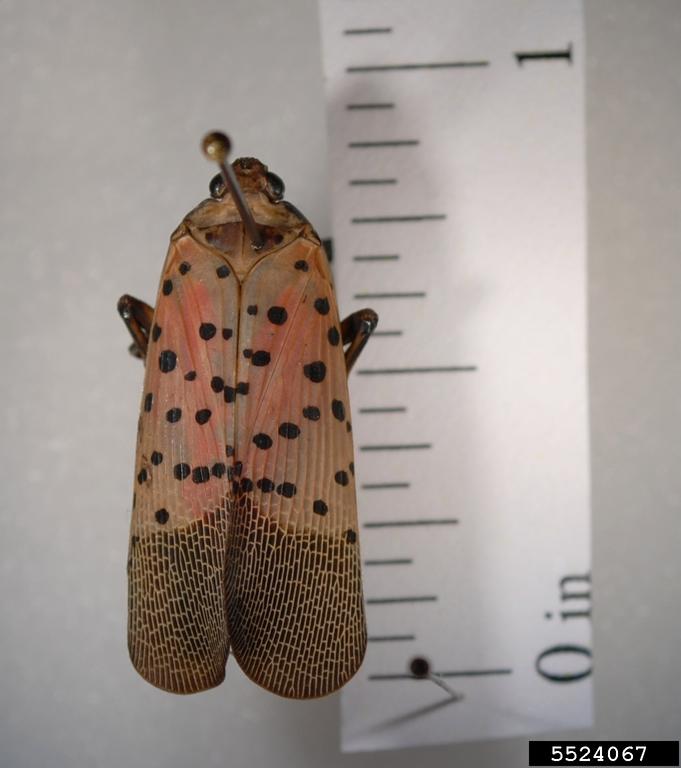
As of June 2022, North Carolina has an established population of Lycorma delicatula, an invasive insect pest of trees and vines including a variety of stonefruits, pine, oak, walnut, poplar, tree of heaven (A. altissima) and grapes.
Commonly referred to as spotted lanternfly (SLF), this insect is native to China, India, Vietnam and parts of eastern Asia. SLF is a member of the Order Hemiptera (true bugs, cicadas, hoppers, aphids, and others) and the Family Fulgoridae, also known as planthoppers.
It was first detected in the United States in eastern Pennsylvania (Berks County) in 2014 and is suspected to have arrived via imported goods, likely as an egg mass adhered to stone products. Since its initial detection, SLF has been detected in eight additional states: New Jersey (2018), Virginia (2018), Delaware (2019), West Virginia (2019), Maryland (2019), Connecticut (2019), New York (2020), Ohio (2020), Indiana (2021), and Massachusetts (2021).
Spotted lanternfly egg masses can easily be moved large distances on firewood or other surfaces on which females deposit eggs.
General Description
Spotted lanternfly overwinter as egg masses that contain 30-50 eggs. Egg masses are grayish-brown and 1-1.5” long and ½ – ¼” wide. When they are newly laid, they are shiny but upon hardening, resemble dried mud. After hatching, individual eggs can be seen arranged in columns and look brown and seed-like.
Young SLF (nymphs) emerge in spring or early summer. Upon emergence, young nymphs are black with white spots on the body and legs. When they reach the last nymph stage, large, red patches appear on their body.
Adults are 1 inch long and 1/2 inch wide. Forewings are light brown with black spots at the front and a speckled band at the rear. Hind wings are scarlet with black spots at the front and white and black bars at the rear. Abdomen is yellow with black bars.
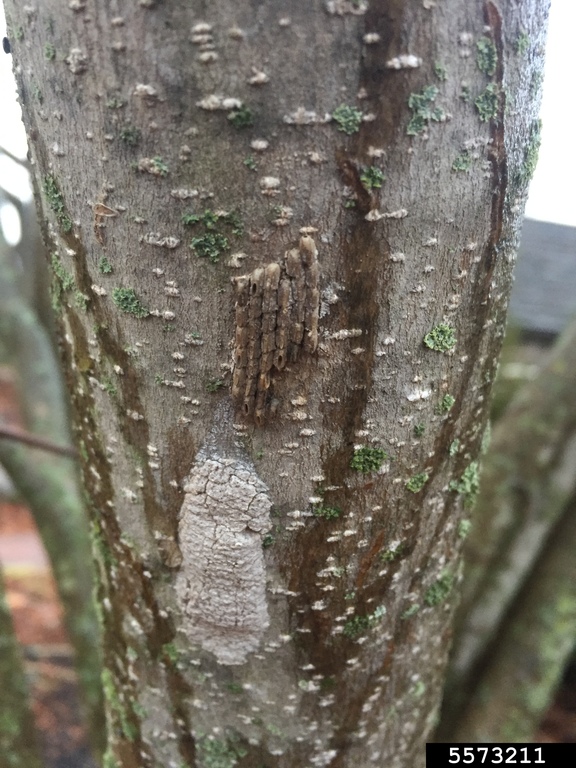

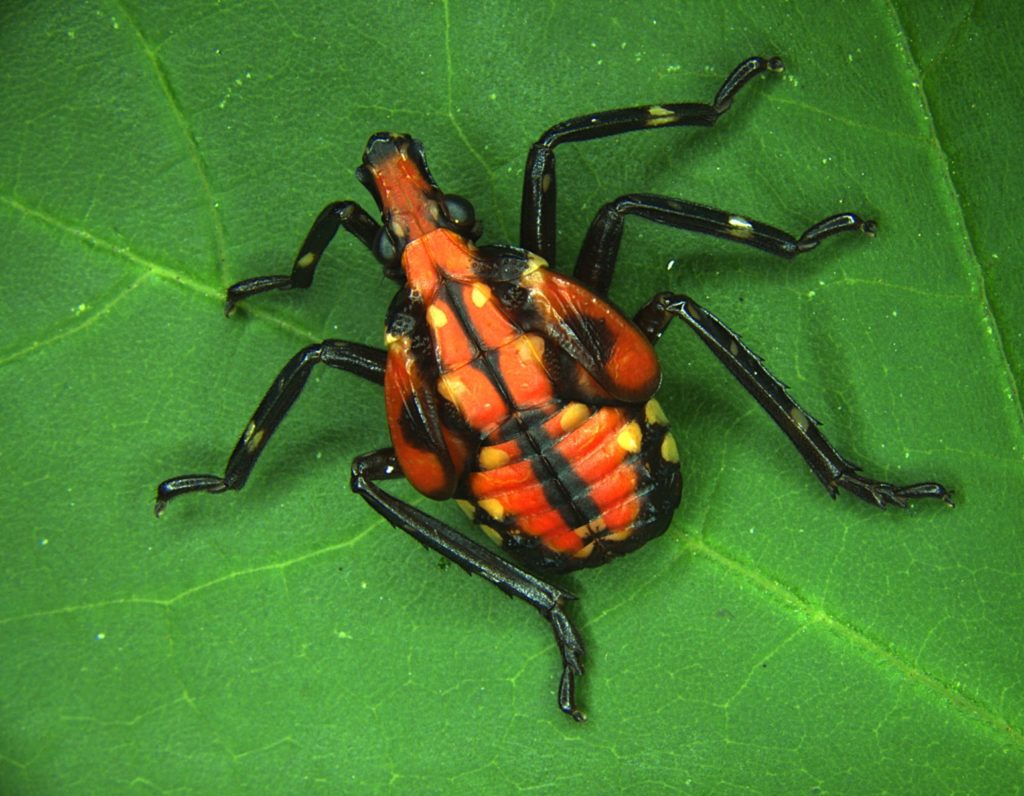
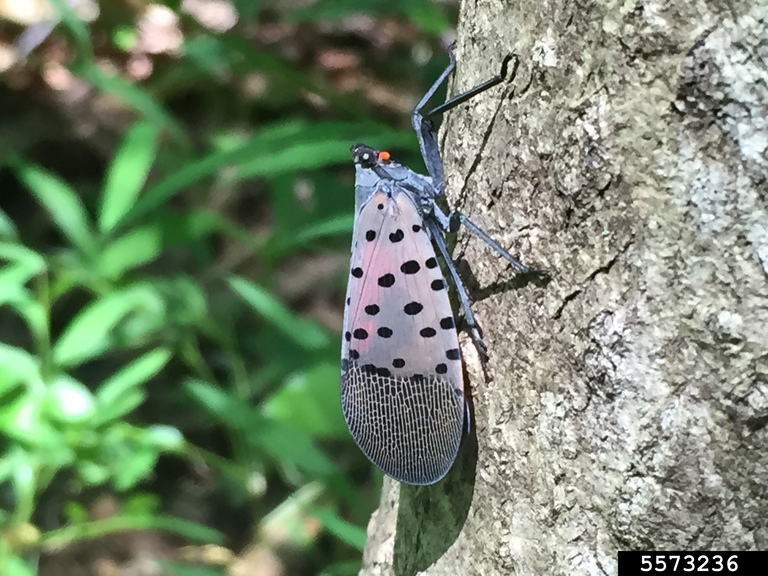
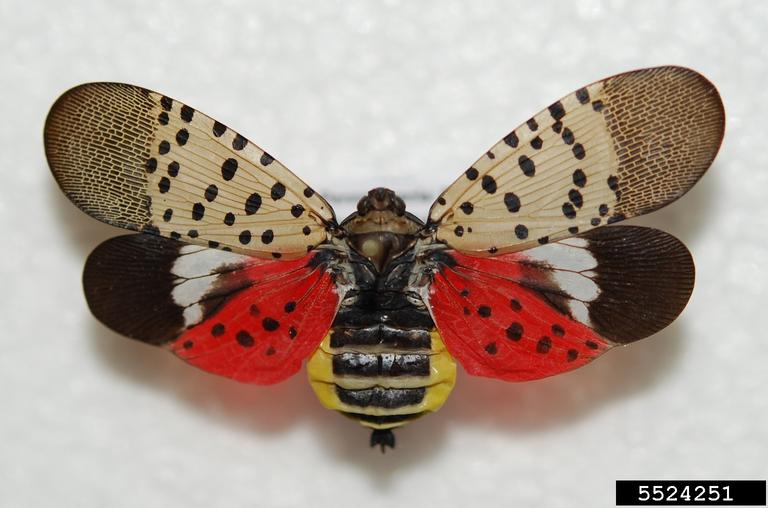
Damage
Nymphs feed on a variety of host plants by sucking sap from young stems and leaves. Adults appear in late July and also feed on stems and leaves of a wide variety of host plants. Adults excrete a sticky, sugar-rich fluid similar to honeydew as they eat which can build up on plants and on the ground underneath infested plants, causing sooty mold to form. The honeydew also attracts other insects, such as wasps and ants, which can become a nuisance as well. Trees attacked by SLF will show a grey or black trail of sap down the trunk. Although it is not believed that spotted lanternflies kill trees, their feeding may produce oozing, wilting, or dieback and/or predispose trees to other stressors. USDA suggests inspecting trees and other host plants beginning at dusk, as insects begin migrating down and gathering in large groups on the trunks and stems of plants in the evening.

How to Report
SLF is not something for a citizen to try to manage on their own! Citizens should contact their county Extension agent or Georgia Forestry Commission county forester if SLF is detected. County agents should direct concerns and inquiries to UGA Warnell School of Forestry & Natural Resources forest health specialist Elizabeth McCarty, elizabeth.mccarty@uga.edu.
Additional Resources
Visit the Bugwood page to learn about identification and life cycle. The image databases (such as https://www.insectimages.org/) has hundreds of images of SLF at multiple life stages and situations freely available for non-commercial use. The EDDMapS website (https://www.eddmaps.org/) can be used to look up invasive and pest information and distribution maps. Additionally, anyone can report any invasive and pest species via the EDDMapS app or website and reports are forwarded to experts in the EDDMapS Verifier network for review before being publicly available.